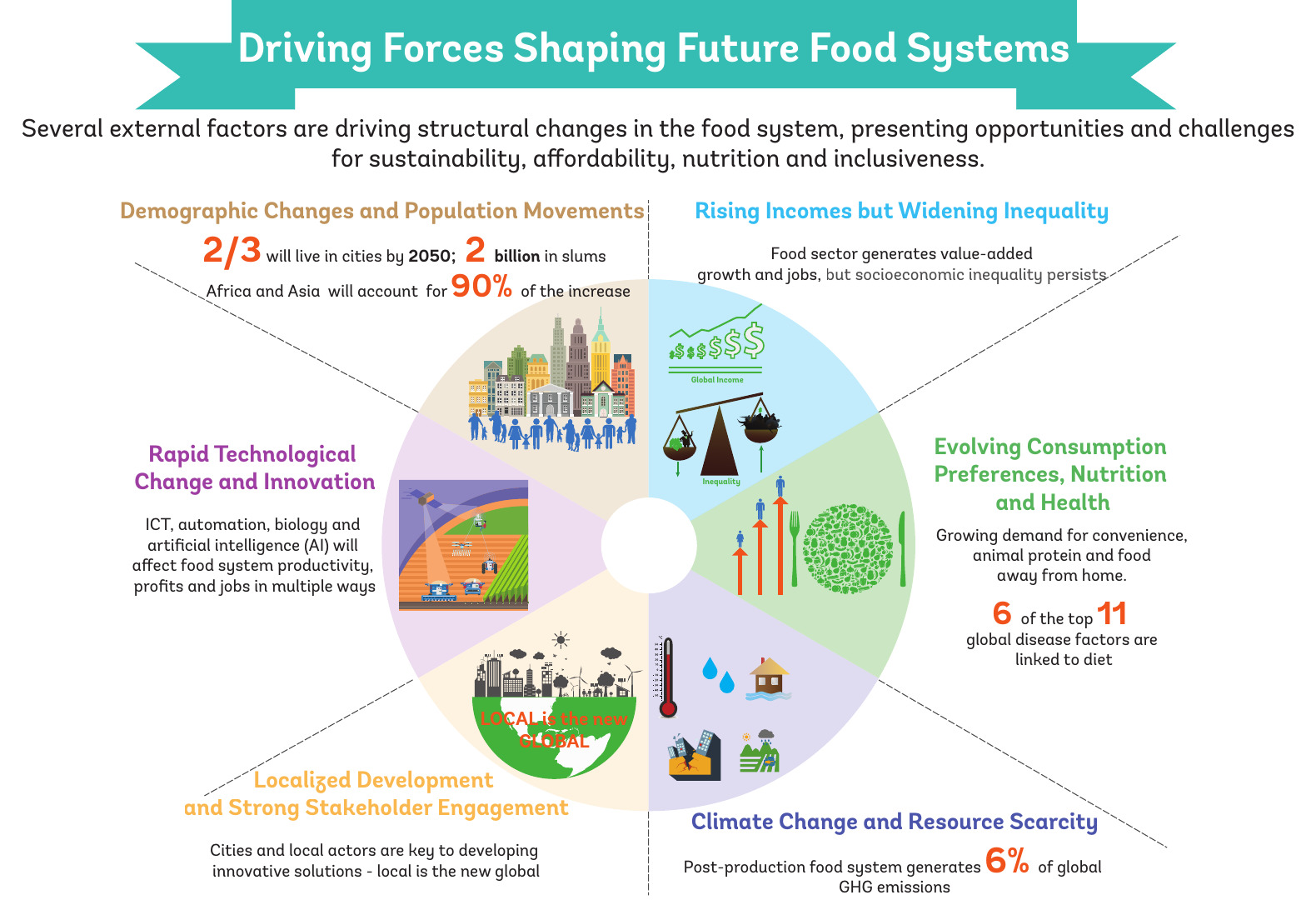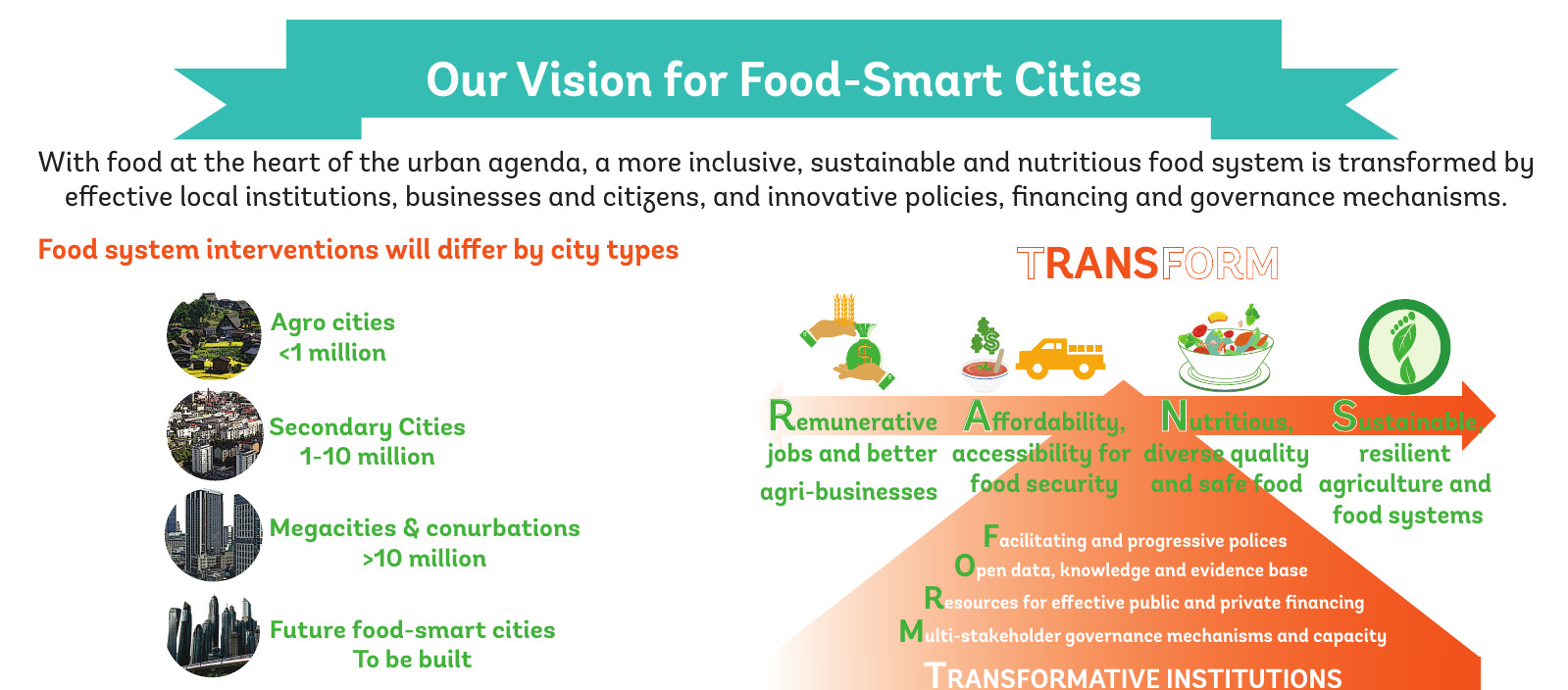Transforming our approach to urban food issues

Over two-thirds of the world’s population are destined to live – and eat - in urban areas by 2050, according to a new World Bank and FAO report. This carries tremendous implications for food systems, and calls for us to step up our efforts to meet the food demands of a rapidly urbanizing planet. James Tefft, FAO senior economist and liaison officer with the World Bank, talks about this report and the importance of capturing more evidence-based data.
What was the impetus behind this report?
Urban food issues are in the news every day, be it food safety, food loss and waste, unhealthy food, new innovations and urban agriculture or jobs and migration. Urban food issues are critical to feeding the world and reducing poverty – two of the Sustainable Development Goals adopted by world leaders. With this report Food Systems for an Urbanizing World – and companion piece Urban Food Systems Diagnostic and Metrics Framework – we have put together a narrative based on the kaleidoscope of information out there to suggest how the World Bank and FAO can engage with and move forward on these issues. It aims to stimulate discussion and suggest pathways to support local and national governments, civil society and private sector actors in their efforts to improve the performance and capacity of food systems.

The report describes the diverse and ever-changing nature of food systems – the interlinked traditional, modern and informal channels that respond to different market segments and consumer preferences. Modern systems include the large wholesale markets, supermarkets and fast food outlets, whereas traditional systems are the small family-run shops and informal systems are the street foods, which many of the urban poor depend on. Support needs to target the type of city and food system.
The task is not easy. Data are weak and empirical analysis weaker still. As cities’ engagement in urban food issues is relatively new, the institutions, governance mechanisms and capacities needed for effective design, implementation and delivery of this agenda must be strengthened. Finding effective ways to mobilize and coordinate contributions from multiple sectors is essential for achieving food system goals.
For decades, we’ve mainly focused on sustainably increasing agricultural production to meet global food needs. That is still very important, as we need to produce about 50 percent more food by 2050 to feed 9 billion plus people. But we also need, for example, to reduce the 20 to 40 percent of food lost or wasted each year, and address the prevalence of obesity and under-nourishment, which coexist in poorer communities and is a growing modern phenomenon. It's new for us to think about food in all its tentacles.
Transforming the way we think about food and agriculture, especially looking at the urban or downstream aspects of food systems, was the notion behind our TRANSFORM approach. The approach addresses everything from affordability and access, to the availability of nutritious and safe food, to sustainability and resilience. It also looks at creating better paid jobs, because when you consider production, services and manufacturing, food systems are one of the biggest employers in urban and rural areas.

How do we move this forward?
For one, we need to know more about the different urban food technologies being used – whether it’s a hydroponic farm growing organic vegetables in shipping containers or a closed-loop agricultural production system that recycles grey water – and understand the economics behind them, their appropriateness and feasibility for different sized cities and mega-cities. The institutional, policy, governance and financing innovations are equally important. Our planning needs to be driven by what countries and cities are currently doing and how they are doing it. While there’s plenty of anecdotal information, there’s not much rigorous evidence-based analysis to guide the design and implementation of effective policies, projects and programmes. We’re working on a number of operationally-oriented modules as part of an urban food toolkit to change that.
Serving future food systems?
 Our work on urban food systems really complements our development work in rural areas. If supply chains are not well organized, for example, and rural farmers are not producing the quality and more convenient foods urban consumers are demanding, countries will begin importing those products. We need to better understand how food demand is evolving as the basis for supporting inclusive supply chain development spanning urban, peri-urban and rural areas.
Our work on urban food systems really complements our development work in rural areas. If supply chains are not well organized, for example, and rural farmers are not producing the quality and more convenient foods urban consumers are demanding, countries will begin importing those products. We need to better understand how food demand is evolving as the basis for supporting inclusive supply chain development spanning urban, peri-urban and rural areas.
The challenge with all of this work is staying on top of these innovations and knowledge and finding ways to operationalize them. We are now completing new guidelines on urban food governance and food market modernization based on evidence from experiences throughout the world.
We’ve really benefitted from the analysis and expertise of FAO technical divisions and strategic programmes – from food systems, supply chains, right to food and governance, to nutrition, innovative agricultural production and urban forestry. This work could not have been done without that specialized knowledge, and now FAO’s investment Centre is helping to translate that knowledge into investment projects financed by our partners.
Main Photo by Ian Valerio via Unsplash (CC0)
Infographics: Food Systems for an Urbanizing World
